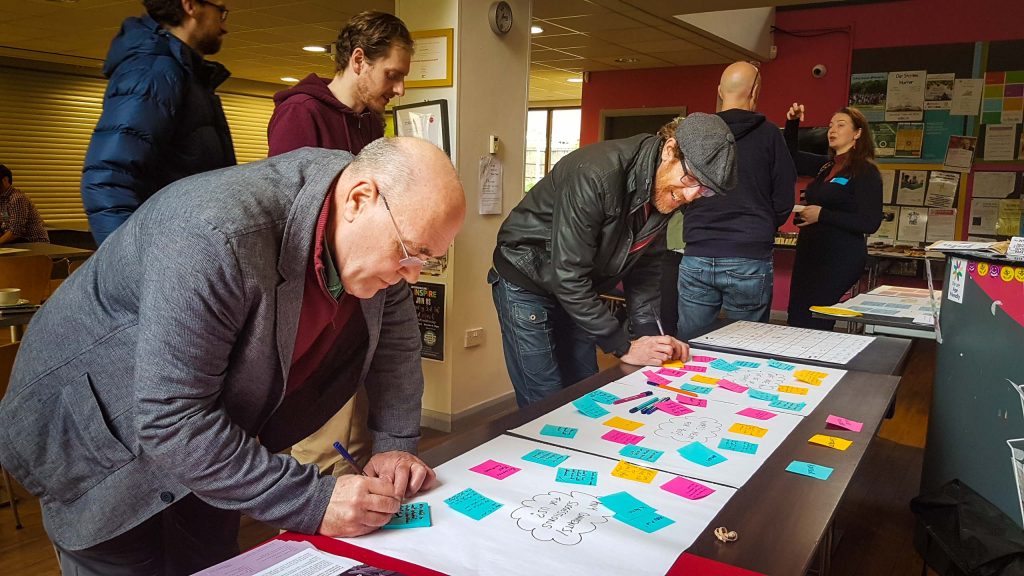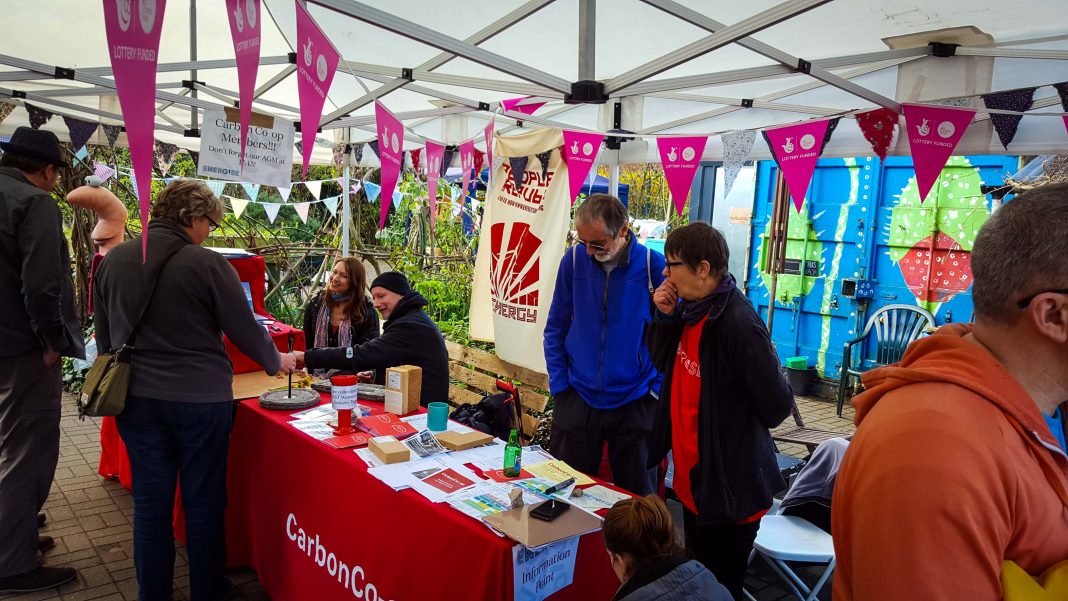Why aren’t we retrofitting more? There’s an unarguable case in favour, after all. Something must be holding us back. The problem is that property owners are just not that engaged in the movement. It has to change. So, what methods have been proven to work for engaging residents in the retrofitting process?
The Federation of Master Builders claims that large-scale retrofitting programmes just aren’t materialising at a pace that’s needed to hit internationally agreed climate targets. Realistically, no democratic government can enforce mandatory renovating responsibilities on property owners. We need people to want to retrofit.
That’s why the art of persuasion is a powerful tool. Aneaka Kellay from the Manchester-based community benefit society Carbon Co-op has plenty of experience in the field, so we turned to her for some advice.
The Haves and Have Nots Are Equals
There are two types of people in this world: those who can afford to retrofit, and those that cannot. It is possible to involve both groups actively. The key is to ensure they are informed and empowered to act.
Empower the People
For the lucky ones, who “have some money, and might spend 10s of 1000s of pounds on their home”, Carbon Co-op’s Retrofit team offers a “household hand-holding service”.
Initiatives like People Powered Retrofit are important. Think about it: where would you start? There is a lot more to it than solar panels and a bit of insulation. The best refit is tailored to the building. We need appropriate guidance to get it right.
And we need guidance to know what not to do wrong. This can especially be a pitfall for households that have the capital and so “get a lot of choice in what materials get put in their homes”. Good intentions mean nothing if we lack the informed ability to act. Guidance – or hand-holding – services like Carbon Co-op’s take the sting out of it by:
- offering professional advice,
- answering common questions (How do we do this? How can we best use our budget to save energy?),
- providing a house assessment to determine what measures are needed,
- supporting the design process,
- finding appropriate contractors,
- making an on-site evaluation to validate the impact,
- adopting a people-centred approach.
What about those who cannot pay for energy efficiency works from their own pocket? Aneaka says they “are often the recipient of funded energy efficiency schemes”, where they exist. As a result, they are at the mercy of the conditions that the programme incurs. If targets aren’t met, they may not even receive compensation. “There’s a great inequality there.”
The rigidity and insecurity of these schemes can scare people away.
Retrofit for All was created to support the less visible retrofittee, to give them a voice. The toolkit creates a “people-centered” intervention that “might change the system a bit”. It follows the same stages as People Powered Retrofit but looks “at what’s important to people at those different phases”. It is a blueprint for social actors, guiding “what scheme managers can do” to make retrofits more accessible and engaging for marginalised and vulnerable people.
Some choice engagement tips from the toolkit:
- Ensure residents feel the scheme has their needs in mind.
- Make the application process simple and provide support for form-filling.
- Do not make the receipt of social benefits a criterion for low-income households.
- Use multiple media and languages to disseminate information.
- Property surveys should be conducted quickly, not be intrusive to personal space, and the results presented in an easy-to-follow format.
- Provide opportunities for residents to understand the process, changes, actors involved, and how to use any new equipment. Involve them in the design process as early as possible.
- Account for physical and mental health needs at every stage, especially during the disruption of construction.
Lead by Example
While social actors such as charities and housing associations prefer the people-based approach, it won’t all be smooth sailing.
“There’s funding constraints and policy constraints and resource constraints that mean that it’s hard to take a people-centred approach.”
However, there are other ways to do it.
Community Groups
Carbon Co-op’s Energy Commons team are “all about citizen participation in energy democracy and energy”. They “work in partnership with the council and local organisations” to boost “the work around the energy system or peer learning”.
Aneaka told us of one facilitated project where two separate residential groups “support members of the community to understand the issues facing Oldham and the country and the world in terms of climate change, understanding what they can do at different levels, and then supporting them to create their own local energy action plans to make it happen”.
Therein lies the key: informing people, speaking to them on their own level, explaining why retrofitting is important, and communicating how they can get involved. Having relatable people from the community – those we know and trust – disseminating the information in easy-to-understand terms in an environment they are comfortable with is a powerful tool.

Education
Carbon Co-op provides workshops to “help people understand energy more”, as well as retrofitting and basic building physics. They learn “how moisture moves, the impact that can have in terms of risks to people’s homes, understand humidity, ventilation”.
This is the knowledge that citizens “can then apply themselves to their own situations”. Giving people the capability to take action themselves, however little, can be very engaging.
Demonstration Homes
“It’s hard to envisage what a nice home can actually feel like. But if you’re in one, it can make a big difference.”
Allow people to see and feel what a retrofitted property is like. “Making things as visceral as possible, being able to see things, touch things, get a feel for it” gets results.
This is what Carbon Co-op has done with their ‘energy house’, a show-home modelling different levels of insulation. The house is heated, so visitors can view heat gains and losses through thermal imaging cameras. The same technique is used in residents’ own homes, showing them “where the cold and hot spots are”.
It can also be done with airtightness: the Carbon Co-op team uses a fan to suck air from the front door. Thermal imaging shows all the gaps where draughts play havoc.
People seal their loft hatches and think ‘job done!’. But when they see the airflow from the ceiling and around the pipes, they understand the inefficiencies much better.
“People are often surprised, they don’t realise that all the pipes in the bathroom, the kitchen can contribute a huge amount to why they lose a lot of heat.”
Drop-in Days
Aneaka mentioned a similar approach at Wilmcote House, a tower block in Portsmouth with ambitions of refurbishment. The refurbishment there had nothing to do with Carbon Co-op, but she cites it as good practice in resident engagement. A relaxed open day for a drop-in demonstration flat really hit home.
The developers decided to do this after learning from former projects “that holding a public meeting was not a very good way of engaging the community, because not everyone will want to come”. It’s always “the loudest voices” that speak up, at the detriment to a fair and broad representation. But not this way.
“The design team were there, so people could talk directly to them about the flats.” As the experts, they could show directly what work had been done, explain it, and answer questions. Moreover, visitors who dropped by “were genuinely asked for their thoughts on it”. From this feedback, the design was changed. “People felt they were actually being listened to.” And as we’ve discovered elsewhere, listening to people is what makes them feel involved.

Community Champions
Aneaka understands the benefits of investing in time and people:
“We’ve put a lot of resource into staff time to really get involved in understanding how the communities work, talking to community leaders, different community organisations, building trust, and then recruiting champions through that process.”
It is important these Champions are “as representative as possible to the local area” and engaged themselves. Their passion floods the community, it’s contagious.
In fact, we explore this in more detail in our article exploring the psychology of retrofitting.
Flexibility
“If we’re going to use renewables more, we need to be able to be more flexible about how we use energy; we might need to use energy at different times of the day when there’s more sun on the grid, or there’s more wind to be as low carbon as possible.”
In terms of decarbonisation, when we speak to citizens the conversation shouldn’t just focus on the hardware they can install at home. We need to be realistic about the changing landscape of energy production and consumption. They should be informed about the role of flexible energy use based on:
- An awareness of the relationship between energy use and emissions.
- How they personally impact the grid and demand-led pricing.
- The changes in behaviour they can make for their own benefit, e.g. becoming prosumers.
This is the person-centred approach that Carbon Co-op promotes. Rather than a stale conversation about HVACs (yawn!), citizens will feel their place in the power ecosystem and feel responsible for the change.
A Matter of Trust
Poorly managed and implemented national schemes have damaged public trust. Maybe we’ve been watching too many exposes but fair to say builders in some regions have a bad reputation.
Carbon Co-op emphasises that efforts should be put in place to regain trust so that residents “don’t feel the house is going to be risked by getting involved” in a retrofit.
Of the national schemes, Aneaka says: “The government support for retrofit in the UK is not sufficient to the task of meeting our carbon reduction targets. There is little in the way of intelligent finance mechanisms, the funding available is limited, there is not enough being done to support the industry to grow, and the stop-start nature of schemes has broken trust”. Hardly a glowing report. This is why she facilitates engagement with “builders, architects, and contractors to get them involved in this area of work if they’re not already trained”.
If handled well, green technologists will become as familiar as plumbers and bricklayers, with reputation intact, to meet a high level of demand.
Aneaka’s recommendations for restoring trust are:
- Redefining builders as climate heroes by “really putting them at the centre of our change of economy into a green economy”.
- Create a future for the sector with “an apprenticeship and advertising campaign to support young people to get into those industries”.
- Provide support packages for small scale outfits that don’t have the space for apprentices. They have plenty of knowledge to pass on.
- Ensure it is all joined up by creating jobs for the apprentices to progress into.
- Support builders to be the best they can be, with “free training from good training providers to be able to take into account the new building standards”.
- Nurture relationships with local builders, the “people you’d get in to do an extension, or you might get to redo your kitchen or your bathroom” and make it standard that they incorporate “energy efficiency into all of those normal refurbishment works”.
Involving Citizens in a Nutshell
So, there we have it. Getting citizens interested in retrofitting is straightforward. You just need to be honest, communicate clearly, and explain what’s happening at every stage of the process. Show them tangible evidence.
People need to know you respect them, their needs, and their situation. Involving reps from their community is an effective way to do this. And above all, don’t let money do the talking; take a people-centred approach and the barriers will fall away.
Aneaka also gave us some insights about the misconceptions around what gets people retrofitting. We’ve taken this and put together a very helpful article about how to strike the tone right in communication. Check it out.


